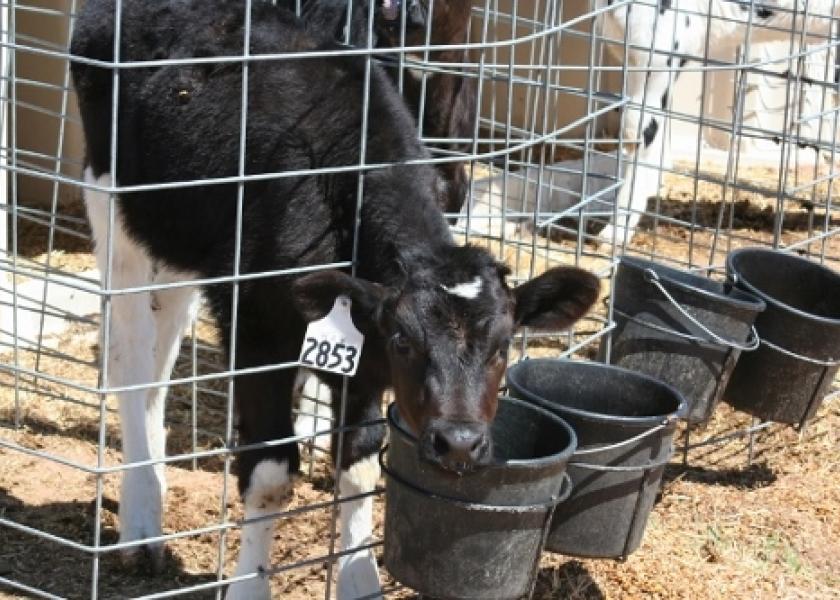Infectious Arthritis in Calves

Infectious arthritis is a frequent complication of septicemia in calves. Joints are painful and swollen, and affected animals are often quite unthrifty. Therapy is often unrewarding.
“The single most important control measure is to ensure the timely intake of three to four quarts of colostrum,” says Jan Shearer, DVM, MS, Iowa State University.
Depending upon severity, infectious arthritis conditions result in calves that develop more slowly or, in the worst case scenarios, calves that may need to be destroyed due to permanent damage of joint cartilage and chronic arthritis. The joints most often affected are the hock, knee (carpus) and stifle joints.
“As with most diseases, when treatment is instituted early a successful outcome is possible,” Shearer says. “However, delays in identification and treatment create conditions that can be very difficult to manage. Prevention is far more effective than treatment. Problem herds need to ensure colostrum intake and maintain a clean and dry calving area for cows at the time of parturition.”
Navel infections and joint ill (infectious arthritis) are consistent with septicemias in calves. Thus, navel dipping has become a routine health-management procedure in most dairy operations.
“Although there is very little if any scientific evidence to support navel dipping as a means to prevent disease in neonates, the association between navel infection, infectious arthritis and septicemia encourages dairymen to include disinfection of navels in neonatal calf-care protocols,” Shearer explains.
Secondary involvement of joints may occur from septicemias arising from gastrointestinal (E. coli, Salmonella, etc.) or respiratory (Mycoplasma spp.) diseases, as well. Joints become warm and swollen, with affected animals showing varying degrees of lameness.
Read more about calf diseases in these articles on BovineVetOnline:
Chronic Pneumonia in Feeder Calves? Thank Mycoplasma bovis
Mycoplasma Pneumonia in Dairy Calves
Colostrum and the Newborn Calf







